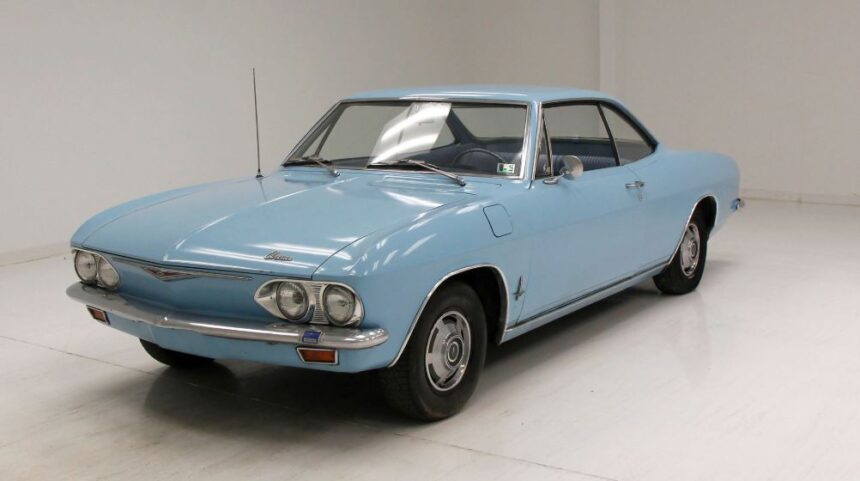Introduction
The 65 chevy corvair stands as a notable chapter in American automotive history. Introduced as a response to the growing popularity of compact cars, the Corvair featured a unique rear-engine, air-cooled design that set it apart from its contemporaries. Despite facing criticism over safety concerns, the 1965 model year brought significant improvements that addressed earlier issues and showcased Chevrolet’s commitment to innovation.
Historical Background
Launched in 1960, the Chevrolet Corvair was General Motors’ answer to the influx of compact, economical cars, particularly from European manufacturers. Its rear-mounted, air-cooled engine was a departure from the traditional front-engine, water-cooled designs prevalent in American cars. The Corvair’s design aimed to offer a spacious interior, improved weight distribution, and a lower center of gravity.
However, early models (1960–1963) faced criticism for their handling characteristics, primarily due to the swing-axle rear suspension. This design could lead to oversteer and potential loss of control if not properly maintained or driven cautiously. The controversy was amplified by Ralph Nader’s 1965 book, “Unsafe at Any Speed,” which highlighted safety concerns in American automobiles, with the Corvair as a focal point.
1965 Model Year Enhancements
The 1965 Corvair marked the beginning of the second generation, introducing several key improvements:
Design and Styling
-
Body Structure: Adopted a unibody construction for increased rigidity.
-
Exterior: Featured a sleek, pillarless design with a more aerodynamic profile.
-
Interior: Offered enhanced materials and a more refined dashboard layout.
Suspension and Handling
-
Rear Suspension: Replaced the swing-axle with a fully independent rear suspension, similar to the Corvette Sting Ray, improving stability and handling.
-
Front Suspension: Updated with softer spring rates to complement the rear changes.
Engine and Performance
-
Engine Options:
-
Standard 164 cu in (2.7 L) flat-six engine producing 95 hp.
-
Optional turbocharged version delivering up to 180 hp.
-
-
Transmission:
-
3-speed manual.
-
4-speed manual.
-
2-speed Powerglide automatic.
-
Safety Features
-
Braking System: Upgraded with larger brakes for improved stopping power.
-
Steering: Offered a quicker steering ratio as part of the “Special Purpose Chassis Equipment” package.
Specifications Overview
| Feature | Details |
|---|---|
| Engine | 164 cu in (2.7 L) flat-six |
| Horsepower | 95 hp (standard), up to 180 hp (turbo) |
| Transmission Options | 3-speed manual, 4-speed manual, 2-speed automatic |
| Suspension | Fully independent rear, coil springs front and rear |
| Braking System | Upgraded drum brakes |
| Body Styles | 2-door coupe, convertible, 4-door hardtop |
| Production Numbers | Approximately 235,528 units in 1965 |
Legacy and Impact
The 1965 Corvair’s redesign addressed many of the criticisms leveled at earlier models. The improved suspension system significantly enhanced handling, making it more competitive with other compact cars of the era. Despite these advancements, the Corvair’s reputation had been tarnished, and sales declined in the face of rising competition, notably from the Ford Mustang.
In 1972, the National Highway Traffic Safety Administration (NHTSA) released a report concluding that the 1960–1963 Corvair’s handling was comparable to its contemporaries, effectively vindicating the model. Today, the 1965 Corvair is appreciated by collectors and enthusiasts for its unique engineering and place in automotive history.
Conclusion
The 65 chevy corvair represents a significant effort by General Motors to innovate and respond to consumer concerns. Its advancements in design, safety, and performance reflect a pivotal moment in the evolution of American compact cars. While its production was eventually phased out, the Corvair’s legacy endures as a testament to automotive ingenuity and the importance of continuous improvement.





